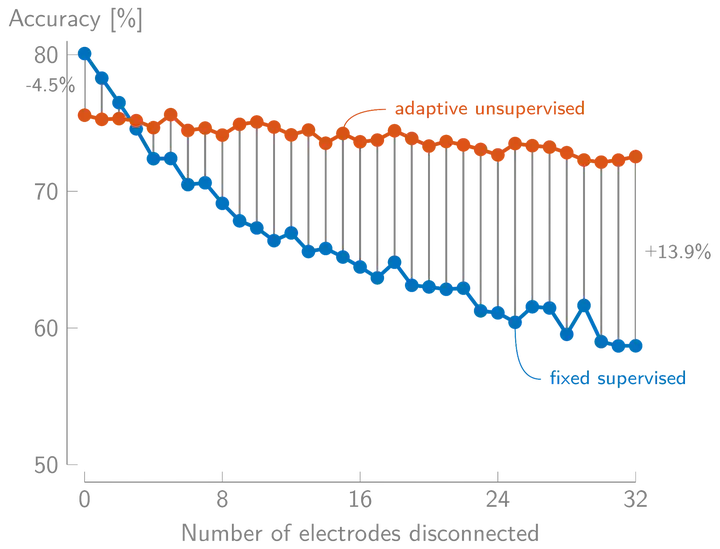Time-Adaptive Unsupervised Auditory Attention Decoding Using EEG-Based Stimulus Reconstruction

Abstract
The goal of auditory attention decoding (AAD) is to determine to which speaker out of multiple competing speakers a listener is attending based on the brain signals recorded via, e.g., electroencephalography (EEG). AAD algorithms are a fundamental building block of so-called neuro-steered hearing devices that would allow identifying the speaker that should be amplified based on the brain activity. A common approach is to train a subject-specific stimulus decoder that reconstructs the amplitude envelope of the attended speech signal. However, training this decoder requires a dedicated ‘ground-truth’ EEG recording of the subject under test, during which the attended speaker is known. Furthermore, this decoder remains fixed during operation and can thus not adapt to changing conditions and situations. Therefore, we propose an online time-adaptive unsupervised stimulus reconstruction method that continuously and automatically adapts over time when new EEG and audio data are streaming in. The adaptive decoder does not require ground-truth attention labels obtained from a training session with the end-user and instead can be initialized with a generic subject-independent decoder or even completely random values. We propose two different implementations: a sliding window and recursive implementation, which we extensively validate on three independent datasets based on multiple performance metrics. We show that the proposed time-adaptive unsupervised decoder outperforms a time-invariant supervised decoder, representing an important step toward practically applicable AAD algorithms for neuro-steered hearing devices.